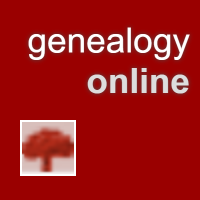 GED-inline is an online GEDCOM validator. It has been around since 2011. Just upload your GEDCOM to the service and get an instant report. Now, developer Nigel Munro Parker has open-sourced the validation component. It’s available at Github via https://github.com/nigel-parker/gedinline This makes validating GEDCOM files even more accessible for developers.
GED-inline is an online GEDCOM validator. It has been around since 2011. Just upload your GEDCOM to the service and get an instant report. Now, developer Nigel Munro Parker has open-sourced the validation component. It’s available at Github via https://github.com/nigel-parker/gedinline This makes validating GEDCOM files even more accessible for developers.
Generated by CFTREE Submitted by Bob Coret Encoding ANSI GEDCOM version in file 5.5 GEDCOM version assumed 5.5 Analysis time 3 seconds to analyse the file Speed 1714 records per second Lines 51944 Number of lines in the GEDCOM file Records 5142 Number of records Warnings 363 Total number of warning messages User-defined 0 Number of lines with user-defined tags Individuals 3549 Number of individuals in the GEDCOM file Males 1864 Number of males Females 1672 Number of females Other 13 Families 1419 Number of families Marriages 638 Number of marriages Places 3333 Number of places mentioned (not necessarily unique) Source records 153 Number of source records (detailed warnings not shown here)
 Genealogy Online has deployed the GED-inline component in it’s infrastructure. Every uploaded GEDCOM file is checked. The results are stored and presented to the user. The message being that a GEDCOM file with warnings and user-defined tags could lead to information loss when transferring the GEDCOM files from their genealogy program or service to another genealogy program or service (like Genealogy Online).
Genealogy Online has deployed the GED-inline component in it’s infrastructure. Every uploaded GEDCOM file is checked. The results are stored and presented to the user. The message being that a GEDCOM file with warnings and user-defined tags could lead to information loss when transferring the GEDCOM files from their genealogy program or service to another genealogy program or service (like Genealogy Online).
GED-inline validation statistics
An analysis of over 10 thousand GEDCOM files shows statistics about the number of warnings per ‘generator’ (program/service which generated the GEDCOM file), the number of user-defined tags and the used encoding and GEDCOM version.
1,215,130,449 lines of GEDCOM were inspected, 8,129,466 warnings were given (that’s 0.7%), and 93,365,260 lines contained user defined tags (that’s 7.7%).
The overview clearly shows that a lot of vendors do not make GEDCOM files which strictly conform to (a version of) the GEDCOM specification published on gedcom.org. And the user-defined tags contain information which other genealogy programs and services usually don’t understand (because usually undocumented) and are rarely implemented by other vendors. This two aspects increases the chance of loss of users genealogical information…
